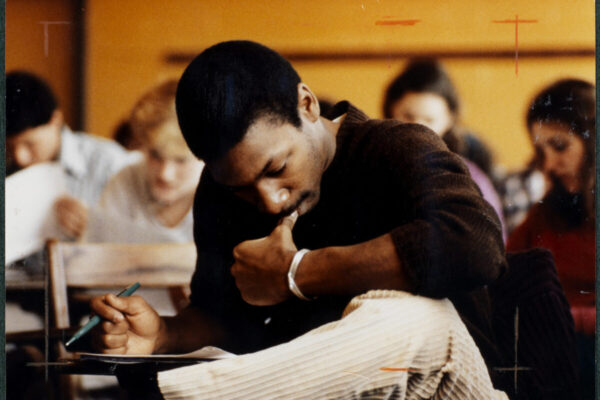As we begin the 2024–25 academic year, campus leaders are confronting a convergence of challenges that make optimism feel more like a balancing act than a given. Pressures that include enrollment, finances, politics, and ongoing concerns over campus safety are weighing heavily on institutions and presidential leadership across the country. While the start of the academic year is traditionally accompanied by excitement and new possibilities, those feelings are tempered this year by the realities we face.
Yet within this complex landscape lies the opportunity to lead with vision, resilience, and purpose. The excitement of new beginnings still exists, but it must be framed within a larger context of the issues at hand. Within this context, it’s now more essential than ever for campus leaders to foster a culture of authentic optimism—a leadership style that acknowledges current challenges while demonstrating the capacity to successfully navigate them.
These moments of tension are when true leadership shines. The optimism we promote must be authentic and grounded in the leadership that is required to support our institutions. It’s not about ignoring the difficult conversations or pretending everything is on an upward trajectory. Instead, it’s about demonstrating the fortitude to lead in tough times and the strategic insight to identify solutions that create long-term benefits for our institutional communities.
Expectations of campus leaders
As the president or chancellor of an institution, your community looks to you for more than just vision and communication—they seek authenticity. A leadership style that is both optimistic and realistic allows campus constituents to see the path forward through both successes and struggles. Your leadership is essential to shape a culture of resilience and shared responsibility in moving the institution ahead and sustaining long into the future.
An often-used metaphor to describe leadership approaches is the glass-half-full versus glass-half-empty perspectives. It’s important to highlight the institution’s strengths and achievements—the half-full part of the glass—but it’s equally crucial to acknowledge the empty part of the glass: the unresolved issues that require our attention. Some presidents might focus solely on their institution’s spires of excellence, while others might fixate on the challenges. Authentic leadership calls for presenting the entire glass to the campus community and allowing the campus to understand that while challenges persist, solutions are within reach when approached collaboratively.
This dual focus is what I call “wearing your bifocals”—you need to clearly see both the present realities and the future possibilities. In practice, this might mean addressing enrollment shortfalls while also emphasizing new strategies for recruitment and retention. Or it could involve acknowledging budgetary constraints while laying out a plan for diversifying revenue streams. The goal isn’t to inspire hope without strategy; it’s to show that leadership means guiding your institution through the storm while keeping an eye on the horizon.
Using authentic optimism to navigate critical issues
Optimism—when presented in a thoughtful and authentic manner—can be a powerful tool for addressing campus challenges. The current political climate is a perfect example. Many universities are dealing with the ripple effects of divisive national conversations that impact everything from academic freedom to diversity, equity, inclusion, and belonging (DEIB) initiatives. For campus leaders, the question becomes: How can we address these tensions while maintaining our institutional values and the success of the institution?
Antioch University provides one example of how optimism can be used to galvanize communities around tough issues. In its Antioch Works for Democracy (AW4D) initiative, the university encourages civic engagement while openly acknowledging the political challenges that threaten democracy itself. Its president’s welcome back message focuses on six pillars—“voting, speaking out, educating each other, sharing information, organizing community initiatives, and volunteering.” This initiative not only highlights Antioch’s commitment to political action but also demonstrates how universities can harness optimism to inspire collective action in the face of significant societal challenges.
The lesson here is that authentic optimism should not be disconnected from reality. Instead, it should provide a framework for understanding how even the most daunting challenges can be approached with strategic vision, clear communication, and a spirit of collaboration.
The impact of realistic optimism on campus climate
Every communication from an institutional president will be scrutinized and analyzed by faculty, staff, students, alumni, and the broader community. It’s tempting to issue messages that lean only on upbeat language, especially at the beginning of the academic year when hope and energy are naturally higher. However, the most effective leaders know that credibility comes from transparency, humility, and communication.
Delivering an authentic message of optimism—one that acknowledges both the achievements and the difficulties the institution faces—builds trust and fosters a campus climate of shared responsibility. This doesn’t mean dampening enthusiasm but rather pairing it with a commitment to action. When the president shows a willingness to face challenges head-on while still projecting a clear path forward, campus constituents are more likely to rally together in pursuit of common goals.
During this time of heightened political and financial uncertainty, presidents who speak honestly about the institution’s financial state while simultaneously laying out strategies to secure its future will earn respect from their campus communities. These are the leaders who will foster a culture in which morale improves not because problems are ignored but because the institution has demonstrated the ability to weather its challenges together.
A long-term strategy for leadership
In today’s higher education landscape, leadership requires more than just optimism. It demands the kind of strategic thinking, authenticity, humility, and resilience that can turn challenges into opportunities for institutional success. As you communicate with your board, faculty, students, alumni, donors, and external partners, remember that the goal isn’t to project unqualified positivity. Instead, focus on fostering a sense of realistic vision—the belief that while the road ahead may be difficult, there are strategic actions we can take together to create a better future.
Leadership that is rooted in realism and coupled with a spirit of authentic optimism will serve you and your institution well in 2024 and beyond. And by consistently delivering this kind of messaging in everything from convocation speeches to alumni updates, you can create a campus culture that embraces both the challenges and the possibilities of the academic year ahead.
If you have any questions or comments about this blog post, please contact us.



